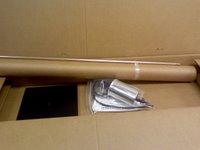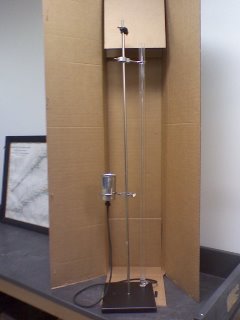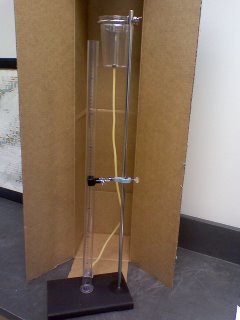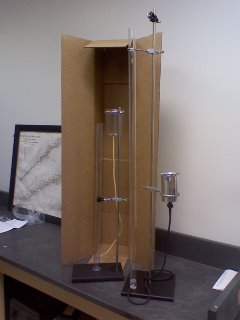I have two disclaimers about this post. First, this post is coming about four and a half years late. What can I say? I'm not so good at the internet hot take thing. The second disclaimer is that I wrote these notes up quickly today while dealing with a teething and sick baby. These are my quickly-jotted notes.
Alright, so here's the deal - in late summer 2011, Vi Hart posted the following video about the mathematics and physics of sound:
I've said it before, and I'll say it again: I like Vi Hart's videos. She has great enthusiasm for math, science and music. Her passion is wonderful. But this video was not great, in my opinion. There are a number of mistakes that she makes and misconceptions that she perpetuates. I think there was a bit of criticism when the video first came out, but it was mostly about how she wrote "vasilar" membrane instead of basilar membrane. She edited the description of the video to say "Accuracy not guaranteed." That doesn't really stop people from watching the video - not that I want to deter people from getting excited about sound and acoustics at all. But it's a bit frustrating when there are so many mistakes in such a popular video.
So, below are my notes on the video. There are parts that I like, and I mention them as well.
1.) 0:02
Talks about air molecules set into motion by the strings and then the wave reaching your ear. But the strings don’t move nearly enough air to make a sound that is audible. The string drives the bridge, which drives the top plate of the instrument. Much of the sound radiation comes from the top plate, but the top plate also drives the air inside the cavity as well as coupling to the back plate.
2.) 0:37
She conflates speed and frequency which is a common misconception. Strictly speaking, not WRONG, but poor phrasing since the speed of the string depends on what point on the string you are looking at as well as the amplitude and the speed is constantly changing. The frequency is not changing (as much). I really don’t like when people use this type of phrasing, since it perpetuates misunderstandings of frequency.
3.) 0:40-50
The initial description of the swing is not bad, but it is not used as completely as it could be, and as we’ll see later, the analogy is stretched beyond what is accurate.
4.) 0:55
Says “That’s amplification.” Well, actually, what was described was resonance, but that was not mentioned.
5.) 1:02
While it is true that driving an oscillator at a frequency above it’s natural frequency will not result in an amplitude as high as if it is drive at the natural frequency (which is what resonance is) you aren’t technically dampening the vibration in that case. That is a nit pick, I guess. However, the visual in the video doesn’t exactly match what is being described, either.
6.) 1:08
"(The string) wants to swing at a certain speed, frequency.” - Again, the conflation of speed and frequency. This bothers me because when you look at the wave speed and the relation between wave speed, frequency, and wavelength it is something different than talking about frequency using the word “speed”.
7.) 1:19
It’s not called a sympathy vibration - it’s called a sympathetic vibration.
8.) 1:22 - 2:26
The description of how the ear works is overall not too bad.
Weirdly, at 1:29 there is a "Fun Fact" in the video which says the number of molecules in a sound wave is larger than the national debt. I can't even unwrap what that is supposed to mean. I get that the sentiment is that there are a large number of air molecules involved in the transport of sound, but - the units are different and how is this "sound wave" defined so that we can count the number of air molecules?
9.) 1:47
“faster frequency” should be “higher frequency” so as not to reinforce the speed = frequency misconception.
10:) 2:38 - 3:07
This whole mess of talking about pushing the swing every other time is just bizarre. The idea that you can drive an oscillator at a lower frequency and then get it to oscillate at it’s natural frequency is inherently non-linear when applied to acoustics-related oscillators. I’m not even really sure what it says about the physics of a pendulum, to be honest. And this is not to say that there is NOT any non-linear effects at play in the ear or with the production of sound, but for what is discussed in the video, the nonlinearities are insignificant.
11.) 3:08 - 3:30
In this section Vi is applying non-linear behavior to the motion of the basilar membrane. She asks: if one frequency goes in, shouldn’t the cochlea respond at places where I’m not actually an expert on the auditory system, but I have never heard about non-linear effects in the cochlea for pure tones at normal sound levels. I’d love to know if I’m wrong about that, but I don’t think I am.
12.) 3:30 - 3:46
Vi asks a really interesting question here. She asks if your ear hears a complex sound at a certain fundamental frequency f, but then a second complex sound at frequency 2f is played, wouldn’t your brain perceive them as the same even if they came from different places? At least, that is what I understood her to be asking. If so, that is a great question!
13.) 3:48 - 5:25
She does a good job of introducing the idea of the overtone series here.
14.) 5:26
"…this is not some magic relationship between mathematical ratios and consonant intervals. It’s that these notes sound good to our ear because our ears hear them together in every vibration that reaches the cochlea."
She is starting to tie the ideas of the overtone series back to her question posed at 3:46. As stated, the above quote is TRUE for the example that she gave (or any overtone series, really). My issue with what is stated is that it makes it sound like ANY vibration that reaches our cochlea has the overtone series embedded in it, which is not true.
15.) 5:34
“Every single note has the major chord secretly contained within it."
This statement is true only if the note is a complex tone containing a harmonic spectrum, which is often the case, but not all instruments will produce such notes.
16.) 5:48
Finishes the explanation of the overtone series.
17.) 5:50
“…because of physics, but I don’t know why…” This is just annoying. Much of the previous explanation contained a lot of physics. There’s no excuse to just say “I don’t understand physics…"
18.) 5:54
“…twice as fast…” Again with the frequency / speed issue.
19.) 6:25
“You don’t notice the higher (harmonics), usually, because the lowest pitch is loudest and subsumes them."
The lowest frequency in a harmonic spectrum is referred to as the fundamental frequency. The fundamental frequency often, but not always, has the highest amplitude in the spectrum. But your ear still associates the PITCH of the sound with the fundamental frequency whether it is loudest or not - or even there at all, as the video points out later. Note that this line also incorrectly uses the term “pitch” to refer to a component of the complex tone. Pitch is a subjective quantity that you associate with the tone as a whole. (So, if we’re counting that is 2 errors here.)
20.) 6:51
“String is pushing around the air…"
Same mistake as made at the start of the video: the string is not pushing a large amount of air. The top plate of the viola is doing the pushing on the air molecules of the sound wave that you hear.
21.) “Basilar membrane is vibrating in sympathy with all these frequencies…"
I’m not sure that it is wrong to say the basilar membrane is vibrating in sympathy with the other parts of the ear and air and instrument, but I’m not sure it’s correct to say it is vibrating in sympathy with the frequencies. Call this a minor nitpick.
22.) 7:14
Description of timbre is brief, but good.
23.) 7:17
Compares the sound a pure tone makes to the vowel sound “ooh” and says it sounds like a flute. Timbre is a subjective quality of sound, but I would disagree that all pure tones sound like oohs or like a flute.
24.) 7:27
There is a comment here about using our mouth to “shape the overtones coming from our vocal cords”. I’ll grant some poetic license to this statement, and it is true that the mouth shape helps determine the vowel sounds. It would have been better to include all parts of the vocal tract.
25.) 7:33 - 7:50
The lowpass filter demo - it’s not exactly clear to me what concept is being demonstrated here.
26.) 7:54 - 9:42
Overall this section is not bad. I will point out that when overtones are played separately and then together you are cuing your ear to listen to the different parts of the tone, and so many people (certainly not everyone, though) will be able to pick out the different parts of the tone after being cued. That does not make the tone any less of a complex tone, but you need to be careful what conclusions you are drawing from this demo. Also, she did not control for amplitude in the overtones starting from about 8:07 and so every combination of tones is clipped, meaning that the sound coming from the speakers actually has MORE harmonic content in it than she intended to demonstrate. This can be seen graphically in the waveform at 9:41.
(I’m going to ignore the overtone fitting the number of bumps comments around 8:45.) Her idea to show the waveforms in actual size is pretty neat, I think.
27.) 9:43
"To make this shape, it pushes forward fast here, then does this wiggly thing, and then another big push forward."
Another reference to “fast” and the rest of the description is not physically or mathematically great here.
28.) 10:20
“Some frequencies get pushed the wrong direction sometimes…” I don’t even know what this means. Frequencies aren’t getting pushed anywhere. This makes no sense to me.
29.) 10:25 - 11:16
The parts about the sound source discrimination are pretty good.
30.) 11:17-11:50
The part about the missing fundamental is good.
31.) 11:52 - end
I think Vi does a great job of reminding us that there is a lot of beauty and wonder in nature that science and mathematics can help us explore. I’m certain that this joy she brings to her videos is what keeps people sharing and watching them.




